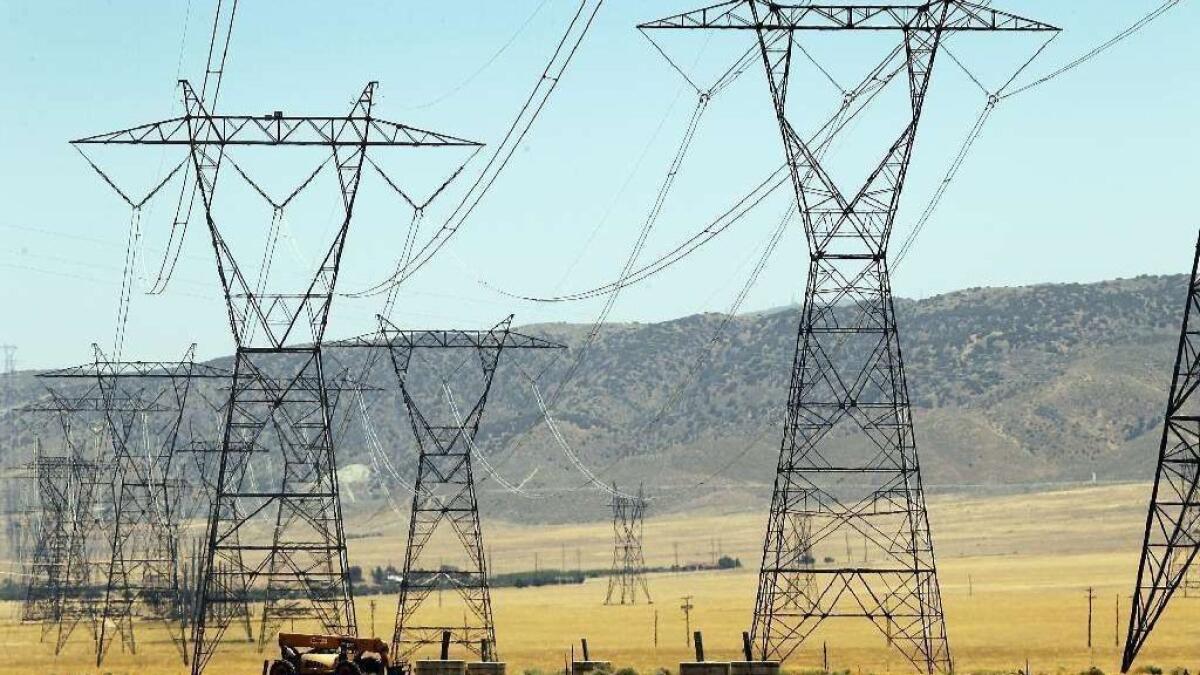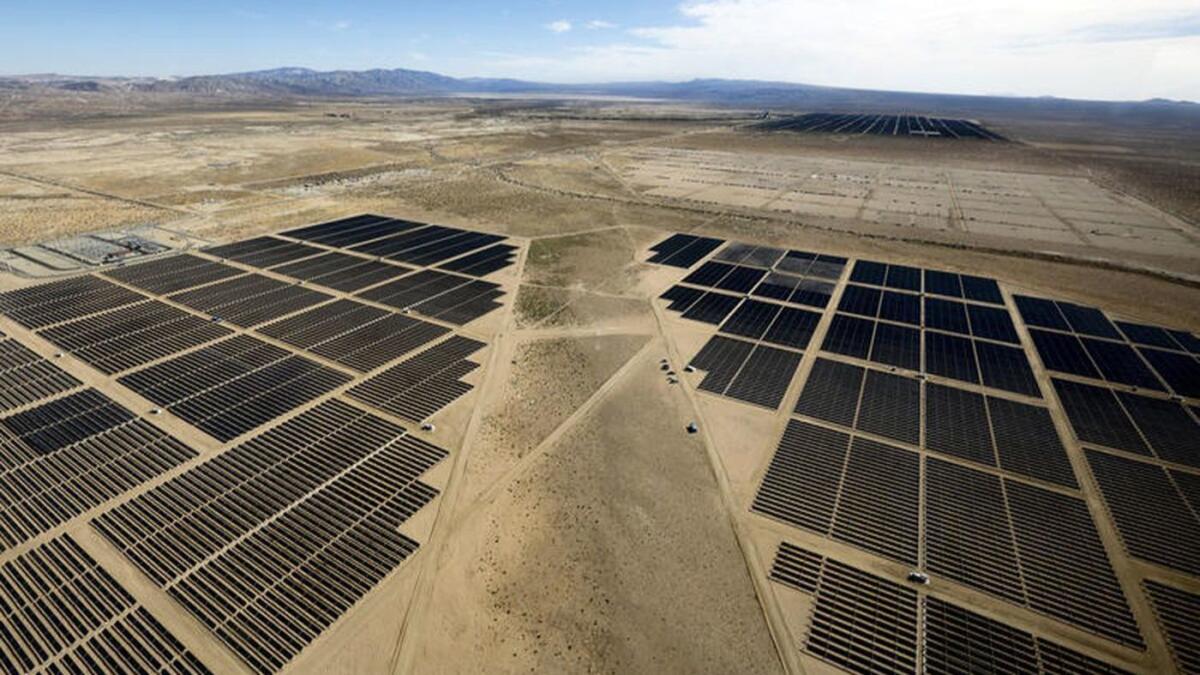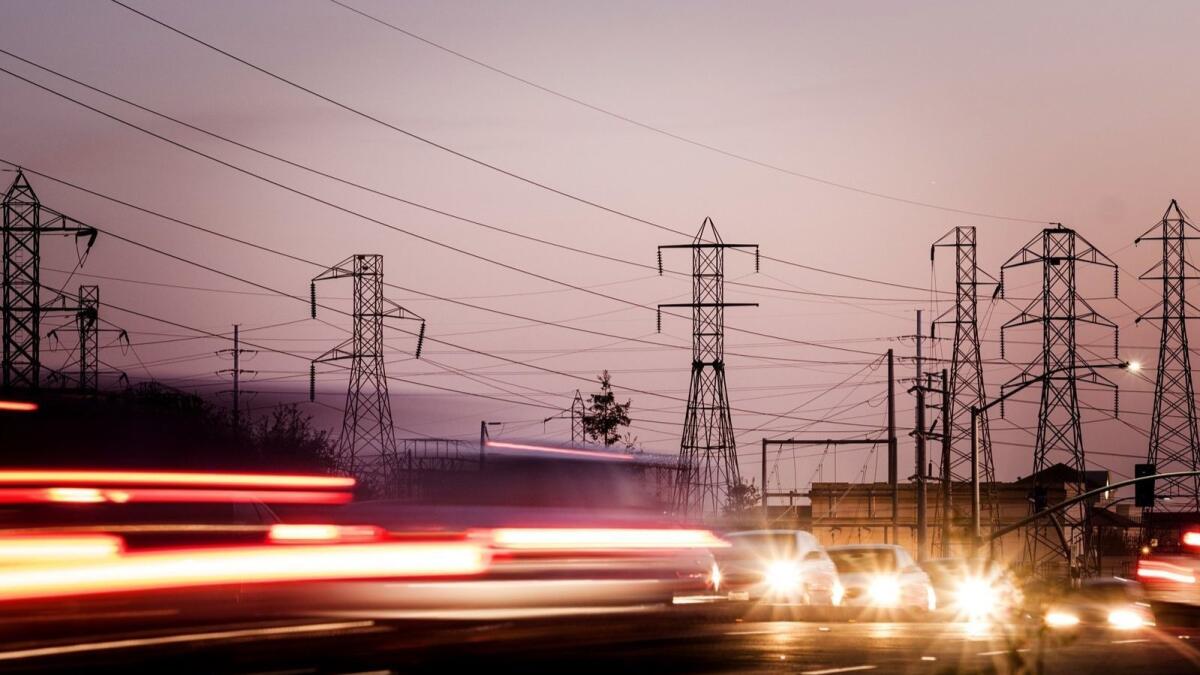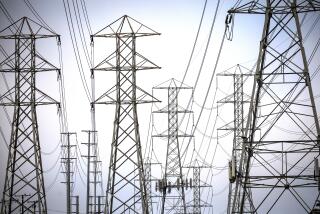SoCal Edison’s new rates will vary with the time of day. Some customers may not benefit much — or at all

Nearly 7 million California households will begin switching to new electricity rates this year that change based on the time of day, bringing lower energy bills for some.
But critics say time-varying rates could hurt more homes than they help — and a new study finds people tend to overestimate the benefits.
State officials have ordered Southern California Edison, Pacific Gas & Electric and San Diego Gas & Electric to enroll most customers in so-called time-of-use rate plans. Under time-varying rates, electricity will cost more in the evening and over the summer, and less during the afternoon and in the winter.
SDG&E plans to begin shifting residential customers to time-of-use rates in March, with Edison and PG&E following in October 2020. Business and agricultural customers already pay time-varying rates.
The idea is to better align rates with the costs of producing electricity, with a goal of reducing overall energy costs and cutting planet-warming emissions. The new rates are being designed so the investor-owned utilities take in roughly the same amount of money overall as they do under current rates.
But a study published last month by Ohio State University researchers sheds new light on the potential shortfalls of time-varying rates, three years after the California Public Utilities Commission ordered the three big utilities to prepare to make the switch. (Los Angeles Department of Water and Power customers aren’t affected.)
The researchers found that Edison customers enrolled in a 2016 pilot program largely based their opinion of the new time-of-use rates on how much money they thought they were saving. The problem: They weren’t very good at estimating how much they were saving.
“I would be concerned about people going into the program thinking, ‘This is a good thing for me,’ and then being surprised later when it turned out that’s not the case,” said Nicole Sintov, a professor of behavior, decision-making and sustainability at Ohio State and one of the study’s coauthors. When actual savings fall short, customers might be more likely to drop out of the program or stop shifting the times they use electricity, Sintov said.
Investigation: Californians are paying billions for power they don’t need »
The utilities and several major environmental groups see time-of-use rates as a valuable tool to help clean up the state’s power supply. California has a growing abundance of cheap solar power during the middle of the day, so much that utilities sometimes have been forced to pay other states to take it. But the sun goes down every evening just as people get home from work, forcing utilities to fire up expensive, polluting gas plants.
Time-varying rates are meant to encourage homes and businesses to shift their power use away from high-demand periods, when energy is dirtier and more expensive, and toward low-demand periods when energy is cleaner and less expensive.
Under Edison’s latest proposal to the Public Utilities Commission, residential customers would be able to choose between two rate options: one with an “on-peak” period of 4 p.m. to 9 p.m., when energy would cost 60% more during summer weekdays, and another with an on-peak period of 5 p.m. to 8 p.m., when energy costs would double during summer weekdays.

The difference in on-peak and off-peak rates wouldn’t be as high during non-summer months or weekends. There would also be “super off-peak” periods with especially cheap electricity during winter daytime hours, which could be especially valuable for homes with electric vehicles that need charging.
Edison officials say they’re planning extensive outreach programs to help customers understand the new rates. They’re also developing an online tool to allow people to explore how their bills would change if they shifted their electricity use habits — for instance, by no longer running their dishwasher in the evening.
“We’ve got over 4 million residential customers and we need to educate all of them,” said Andre Ramirez, a senior advisor for pricing design and research at Edison. “We’re trying to make this info as easy to digest as possible.”
Whatever the final rate structure looks like, residential customers at all three utilities will be able to switch back to their current plan, although research shows that most people stick with their default electricity rate no matter what. And low-income residents in hot climate zones who are enrolled in discount programs won’t be automatically switched to time-of-use rates, although they can make the switch if they want to.
Edison’s rate proposal has been endorsed by the state’s Public Advocates Office and two major environmental groups, the Environmental Defense Fund and the Natural Resources Defense Council.
Other supporters include trade groups for the solar and energy storage industries. In theory, time-varying rates would incentivize homes with solar panels to install batteries because they could charge the batteries during off-peak periods and then use the stored energy to power their homes when electricity from the grid is more expensive.
California to rely on 100% clean electricity by 2045 under bill signed by Gov. Jerry Brown »
One prominent critic of time-varying rates is the Utility Reform Network, or TURN, a ratepayer advocacy group based in San Francisco. TURN prefers the tiered rates that Edison, PG&E and SDG&E customers currently pay by default, in which higher-usage customers pay more. Marcel Hawiger, a staff attorney at TURN, said he’s worried the switch to time-of-use rates will benefit those high-usage customers.
“The 10% of top users will benefit. And the 90% of bottom users will do worse,” Hawiger said.
During pilot programs conducted by the investor-owned utilities in 2016, customers reduced their electricity use during peak periods by 3% to 5% and reduced their bills by 0% to 2%. But those numbers were averages, with some groups of customers more likely to save money and others more likely to lose money.
TURN pointed to data suggesting that if people don’t change their electricity-use habits in response to the new rates, more people will see their bills go up than down.
For instance, a consultant hired by Edison found that under one of the rate designs the utility tested, 10% of customers would see their bills go down and 25% would see their bills go up in the absence of behavior changes, with the remaining 65% seeing their bills stay roughly the same.

The big question is how much people will change their behavior in response to the new rates. The recent study from Ohio State shows how important it is for utilities to provide clear information to their customers about what they can do to save under time-of-use rates, said Sintov, the study coauthor.
“Most people aren’t going to be like, ‘My hair dryer uses 1,600 watts, and I’ve been using it for 10 minutes, so here’s how much that costs.’ People aren’t going to be doing that calculation in their heads,” Sintov said.
Terrie Prosper, a spokeswoman for the California Public Utilities Commission, said the state is taking steps to make sure households understand how the new rates may affect them. She said residential customers will receive “shadow bills” showing what they would have paid under their previous rate plan, and that during the first year after the switch, anyone who would have paid less under the old rates will be refunded the difference.
The Utility Reform Network has also questioned the environmental benefits of time-of-use rates. Edison, for instance, estimated last year that its rate proposal would decrease planet-warming emissions from residential electricity use by just 0.7%.
“There seems little reason to increase customer bills for most people for very, very small greenhouse gas reduction benefits,” Hawiger said.
Russell Garwacki, Edison’s director of pricing design and research, said he doesn’t expect a “tremendous amount” of climate benefits as a direct result of time-varying rates. But he thinks there will be further reductions in planet-warming emissions as the new rates incentivize people to buy electric cars or batteries.
Twitter: @Sammy_Roth
More to Read
Inside the business of entertainment
The Wide Shot brings you news, analysis and insights on everything from streaming wars to production — and what it all means for the future.
You may occasionally receive promotional content from the Los Angeles Times.











